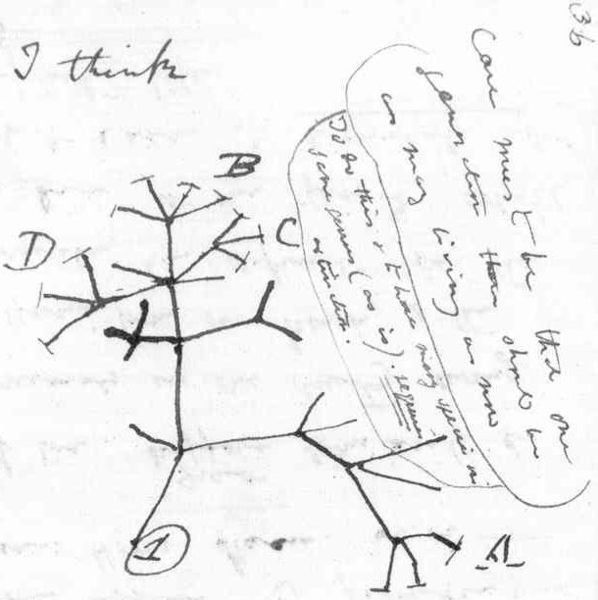
A modern phylogenetic tree (that's the correct term) looks something like this:

If we look at the group at the bottom of the tree, these are all apes (humans count in this group too). We can see that Bonobos and Chimpanzees are the most closely related, with Humans next to them.
One of the important things that people often get wrong about evolution is the idea that we 'descended from monkeys'. If you look at the tree, each of the tips represents a modern species, but the next branch up, from where two species combine, represents a species that was somewhat similar to each of the modern species, but it wasn't exactly the same as any of them. Sometimes we have fossil records for these species, sometimes we don't. So when people say 'we descended from monkeys', it is closer to the truth to say both monkeys and humans descended from a common ancestor species in the fairly recent past (on an evolutionary timescale).
If you're interested in learning more about 'common ancestor' species. There's a fun website called Timetree.org which will show you the time at which researchers think that the speciation event (the branching that you can see on the tree) happened for different pairs of species. This gives you an idea of when the common ancestor species might have lived.
You can also find out some interesting facts about which animals are most closely related to each other. Some that I find amusing are:
Dogs vs Cats - 55 Million years ago
but
Dogs vs Pandas - 45 Million years ago (you'll have to use the latin name for Panda - Ailuropoda)
Cows vs Horses - 82 Million years ago
but
Cows vs Whales - 56 Million years ago
No comments:
Post a Comment